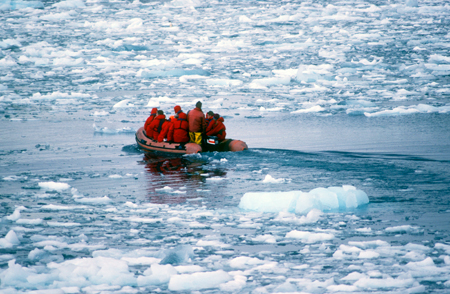One of the principal problems encountered when working in low temperatures is that of reduced battery power. In an age when many items of photographic equipment are reliant upon a portable power source, this problem has become particularly acute. Many types of battery lose some of their capacity to deliver current at low temperatures, and particularly when temperatures drop below freezing point.
 Before embarking on a photographic trip in cold conditions it is worth reading the temperature specifications for not only each main item of equipment and also the relevant power sources. In polar environments, and high on mountains, photographers are often seen struggling with failed cameras and flat batteries. Some manufacturers used to recommend "polar lubrication" for such environments but the age of digital cameras has perhaps reduced the number of moving parts.
Before embarking on a photographic trip in cold conditions it is worth reading the temperature specifications for not only each main item of equipment and also the relevant power sources. In polar environments, and high on mountains, photographers are often seen struggling with failed cameras and flat batteries. Some manufacturers used to recommend "polar lubrication" for such environments but the age of digital cameras has perhaps reduced the number of moving parts.
Various types of battery have different low-temperature characteristics. Lithium cells are generally better than conventional dry batteries and nickel cadmium cells. They will normally perform well at temperatures as low as -20oC, but check the specifications. Some manufacturers quote a working temperature range of -40oC - 60oC. Alkaline cells tend to have a working range of about -20oC to 54oC but reduced performance may become apparent below freezing point. Silver oxide cells are normally specified in the range -10oC to 54oC. Nickel cadmium cells also have a reasonably good cold weather performance but the various manufacturers quote different figures.
Having prepared equipment as thoroughly as possible, keep battery-powered items such as cameras as close to the body as possible. Set up a tripod with a quick-release head and keep the camera warm inside clothing until the moment comes to make exposures. Then return the camera to the warmest possible location - probably inside clothing. The other essential element of preparation is of course to have at lease three sets of batteries available - one in use, one warm and one warming up after being used.






